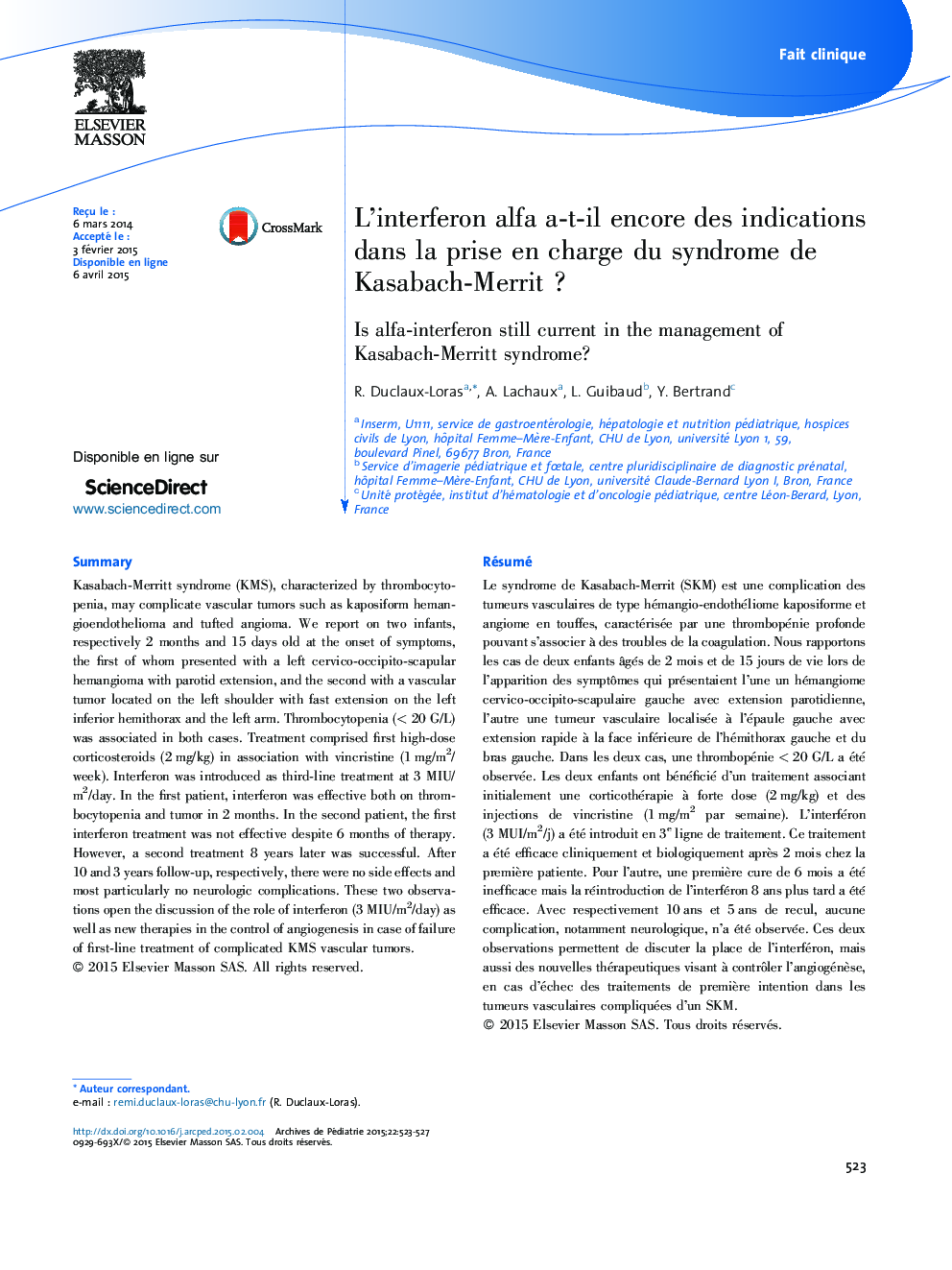| Article ID | Journal | Published Year | Pages | File Type |
|---|---|---|---|---|
| 4145865 | Archives de Pédiatrie | 2015 | 5 Pages |
RésuméLe syndrome de Kasabach-Merrit (SKM) est une complication des tumeurs vasculaires de type hémangio-endothéliome kaposiforme et angiome en touffes, caractérisée par une thrombopénie profonde pouvant s’associer à des troubles de la coagulation. Nous rapportons les cas de deux enfants âgés de 2 mois et de 15 jours de vie lors de l’apparition des symptômes qui présentaient l’une un hémangiome cervico-occipito-scapulaire gauche avec extension parotidienne, l’autre une tumeur vasculaire localisée à l’épaule gauche avec extension rapide à la face inférieure de l’hémithorax gauche et du bras gauche. Dans les deux cas, une thrombopénie < 20 G/L a été observée. Les deux enfants ont bénéficié d’un traitement associant initialement une corticothérapie à forte dose (2 mg/kg) et des injections de vincristine (1 mg/m2 par semaine). L’interféron (3 MUI/m2/j) a été introduit en 3e ligne de traitement. Ce traitement a été efficace cliniquement et biologiquement après 2 mois chez la première patiente. Pour l’autre, une première cure de 6 mois a été inefficace mais la réintroduction de l’interféron 8 ans plus tard a été efficace. Avec respectivement 10 ans et 5 ans de recul, aucune complication, notamment neurologique, n’a été observée. Ces deux observations permettent de discuter la place de l’interféron, mais aussi des nouvelles thérapeutiques visant à contrôler l’angiogénèse, en cas d’échec des traitements de première intention dans les tumeurs vasculaires compliquées d’un SKM.
SummaryKasabach-Merritt syndrome (KMS), characterized by thrombocytopenia, may complicate vascular tumors such as kaposiform hemangioendothelioma and tufted angioma. We report on two infants, respectively 2 months and 15 days old at the onset of symptoms, the first of whom presented with a left cervico-occipito-scapular hemangioma with parotid extension, and the second with a vascular tumor located on the left shoulder with fast extension on the left inferior hemithorax and the left arm. Thrombocytopenia (< 20 G/L) was associated in both cases. Treatment comprised first high-dose corticosteroids (2 mg/kg) in association with vincristine (1 mg/m2/week). Interferon was introduced as third-line treatment at 3 MIU/m2/day. In the first patient, interferon was effective both on thrombocytopenia and tumor in 2 months. In the second patient, the first interferon treatment was not effective despite 6 months of therapy. However, a second treatment 8 years later was successful. After 10 and 3 years follow-up, respectively, there were no side effects and most particularly no neurologic complications. These two observations open the discussion of the role of interferon (3 MIU/m2/day) as well as new therapies in the control of angiogenesis in case of failure of first-line treatment of complicated KMS vascular tumors.
